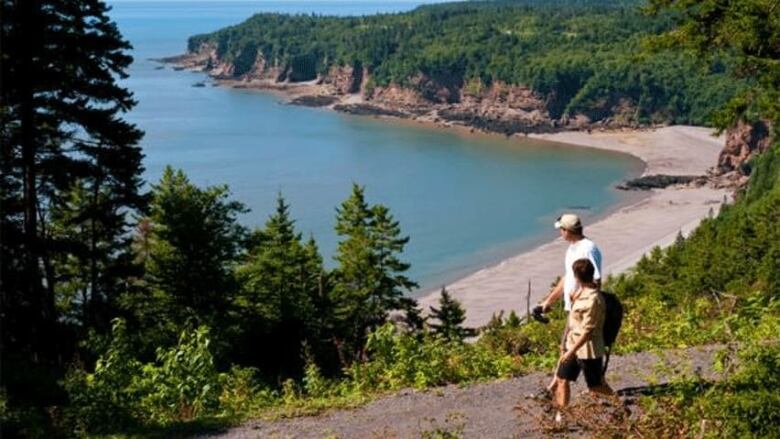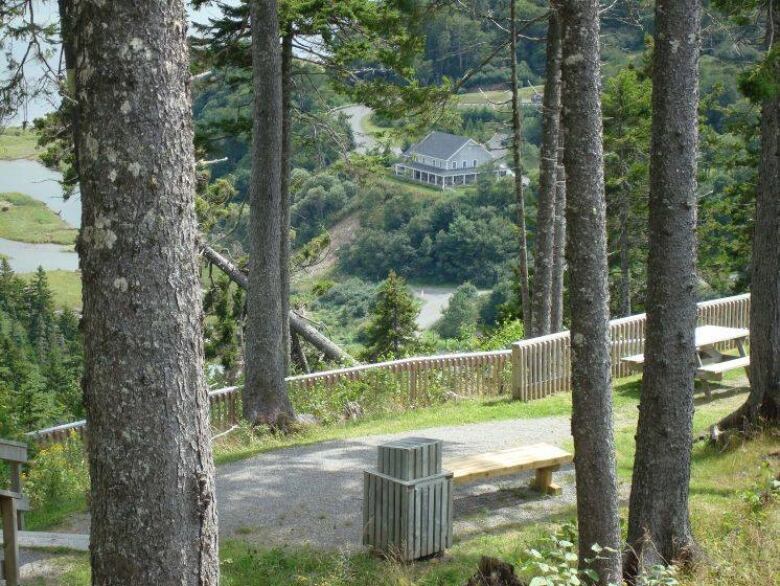Samuel de Champlain expert is back by popular demand
With the help of journals, travel logs and maps, former professor tells the tales of French explorer

Former Mount Allison University professorPaul Bogaardis returning to the Bay of Fundy by popular demand.
For the second year in a row, Bogaard is making his way to St. Martin's to give the public a presentation on the historic community.
St. Martin's, which was formerly called Quaco,is where French explorerSamuel de Champlain first stepped foot on New Brunswick soil. Champlain arrived in New Brunswick in June of 1604.

With the help of the explorers detailed travel logs and maps, Bogaard has become an expert on all things Samuel de Champlain.
"They literally say how far they sailed each day, exactly where they stopped, it explains what sorts of things they're looking for and the sorts of things that Champlain reports they had found," he said.
Naming the bay
Before making his way to New Brunswick, Champlain found his way to Nova Scotia to look for copper. After finding what they were searching for, they located New Brunswick's coastline looking North. That's when they set sail and arrived at what is now St. Martin's.
"They were cruising our coastlines and stopping along our shore for the first time in European exploration, which was really quite exciting," said Bogaard.
BeforeChamplain discovered the Bay of Fundy through his travels, the bay wasn't a popular spot. Champlain played a big role in naming the area and creating its first maps.
"We're sure that there were early fishermen in the area and other explorers may have cruised by, but none of the early maps of the day show the Bay of Fundy," said Bogaard.

Champlain called the bay "Baiede Francoise," which translates to French Bay. But in Champlain's journal entries he also described it as a bay that splits and splits again. The explorer didn't use the word "split" in naming the area, but Bogaard believes Champlain is responsible for the idea that the bay splits in various places.
Once Acadians started populating the area, it's believed they used to call it "Cape Split." The Acadian name was then used in later maps to describe the Bay of Fundy as a whole.
Fendu, the French word for split, is where the Bay Fundy got its name. But where the name came from is up for debate.
"There's been a controversy for a long time as to whether it's a Spanish word or it's a Portuguese word or whether its French," he said. "They're similar languages and they all have a word of the sort but they are spelled differently and carry different meanings."
"Amusing, informative and entertaining"
The work presented by Bogaard is all done on his own time.
Last year's event was completely sold out, and this year many asked for him to come back.
Beverley Franklin, special events co-ordinator, says it's an honour to have the former professor present to the public. "
They love it, because we're right on the Bay of Fundy on the Fundy trail. It's a privilege," she said.

Bogaard will be giving his presentation on Samuel de Champlain at 2 p.m. Saturday at the Big Salmon River Interpretive Centre at the Fundy Trail Parkway.
With files from Information Morning Saint John












_(720p).jpg)


 OFFICIAL HD MUSIC VIDEO.jpg)
.jpg)



























































































